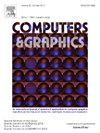Global Recurrent Mask R-CNN: Marine ship instance segmentation
IF 2.5
4区 计算机科学
Q2 COMPUTER SCIENCE, SOFTWARE ENGINEERING
引用次数: 0
Abstract
In intelligent ship navigation, instance segmentation technology is considered an accurate and efficient tool for vision perception in marine scenarios. However, the complex sea surface background and the diversity of ship types and sizes in marine environments pose significant challenges for instance segmentation, especially for small-scale targets. Therefore, this paper presents an end-to-end Global Recurrent Mask R-CNN (GR R-CNN) algorithm designed to enhance the multi-scale segmentation performance of ship instances in marine settings. Initially, this method proposes the Recurrent Enhanced Feature Pyramid Network (RE-FPN) module, which uses a feature recurrence and bidirectional chaining fusion mechanism to deeply integrate both deep and shallow features of images, effectively extracting multi-scale features and semantic information. Subsequently, we propose the Fine-Grained Global Fusion Mask Head (FGFMH) module, utilizing a fine-grained multi-layer receptive field extraction mechanism to enhance the extraction of global and multi-scale features. These two modules collaborate to further improve the ship instance segmentation capability. Experiments conducted on the MS COCO test-dev, PASCAL VOC, and custom OVSD datasets demonstrate accuracy improvements of 1.8%, 3.29%, and 1.3%, respectively, compared to Mask R-CNN. Our method surpasses various advanced techniques and provides valuable insights for the research on multi-scale instance segmentation of ships in complex environments.

求助全文
约1分钟内获得全文
求助全文
来源期刊

Computers & Graphics-Uk
工程技术-计算机:软件工程
CiteScore
5.30
自引率
12.00%
发文量
173
审稿时长
38 days
期刊介绍:
Computers & Graphics is dedicated to disseminate information on research and applications of computer graphics (CG) techniques. The journal encourages articles on:
1. Research and applications of interactive computer graphics. We are particularly interested in novel interaction techniques and applications of CG to problem domains.
2. State-of-the-art papers on late-breaking, cutting-edge research on CG.
3. Information on innovative uses of graphics principles and technologies.
4. Tutorial papers on both teaching CG principles and innovative uses of CG in education.
 求助内容:
求助内容: 应助结果提醒方式:
应助结果提醒方式:


